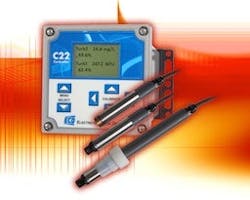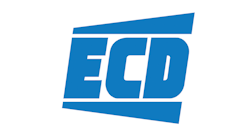The new Triton TR6 Sensor from ECD measures turbidity or suspended solids in four selectable dual ranges featuring preset low and high ranges from 0 to 4000 NTU. Its optical infrared (IR) sensor emits a beam of 850 nm (near infrared light) into a water sample, where it is scattered by particles suspended in the water. The amount of light reflected back to the sensor by the particles is correlated to the turbidity or suspended solids present in the water.
The flexible Triton TR6 sensor provides turbidity measurement in milligrams per liter (mg/L), parts per million (ppm) and percent solids to volume, depending on the size, shape and composition of the suspended solids in the water. Turbidity measurements (NTU, FNU) are calibrated to the specific user application environment with standards such as Formazin, StablCal or SDVB beads.
Designed for demanding environments, the TR6 Sensor is temperature-compensated to achieve accuracy of up to 2% of reading or 5 NTU (whichever is larger), features a drift rate of less than 1 percent per month and operates at pressures of up to 50 psi. The sensor body is constructed with wetted stainless steel (AISI 316 Ti) and rugged epoxy. The process connection is a 1-inch NPT nylon fitting and features an optional waterproof cable. It can be installed in either an inline flow cell or a submersible configuration of up to 500 meters in depth.
Source: Electro-Chemical Devices



